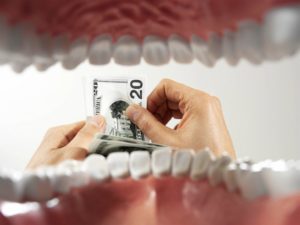Hygienists play a crucial role in co-diagnosing a variety of issues. The obvious are caries, periodontal disease, and oral cancer, but we also play a vital role in recognizing TMJ disorders, which make up about 60-70% of our population.1 Everyone has a Temporomandibular joint (TMJ), but not everyone has a Temporomandibular Disorder (TMD). If you aren’t currently doing an intraoral and extraoral assessment, I encourage you to bring this back into your practice. It only takes a few minutes and can make a huge difference in patient care and diagnosis.
As a review, the TMJ is the bilateral joint between the mandible and the temporal bone. It is a synovial, condylar, and hinge-type joint that allows flexibility of movement, such as chewing. The joint can take on a lot of force, so the left and right joints must function together as one unit. If one side deviates or isn’t working correctly, it can cause TMJ dysfunction, which is a condition that restricts the movement of the jaw and causes pain. Several factors can contribute to TMD, such as stress, bruxism, abnormal posture, and psychological conditions.1 Some clinical manifestations include:2
- Pain upon opening, limited opening, or in general discomfort and achiness around the jaw, neck, face, and ears
- Problems chewing normally and pain when eating, for example, chewing gum or eating a bagel
- Clicking or popping sounds in the jaw when chewing
- Headaches
- Trouble sleeping normally
- Dizziness
- Ringing in the ears
- Joint pain
- Muscle spasms and swelling around the jaw and face
Assessing the TMJ joint consists of first evaluating the patient’s range of motion.3 Have the patient open wide without any pain, and it is ideal if they can get three of their fingers to go inside their mouth in a vertical position. You can measure the distance between the mandibular and maxillary central incisors; ideally, it should be 40-55mm. Next, you should check for any noise or tenderness by slightly positioning your middle and index fingers over the lateral pole and in front of the condyle. Instruct the patient to open and close their mouth during the examination, and using very light pressure, listen carefully for audible TMJ noises.3
As dental hygienists, it is crucial to perform a TMJ assessment to improve treatment outcomes. The clinician should consider not only the bite and function but also the patient’s habits and any medical conditions when carrying out any restorative work, particularly regarding the functionality of the patient’s bite. One of the leading causes of restoration failure and delayed implant failure is excessive bite force due to parafunction.4 By assessing the patient for TMD, we can assist the dentist in providing better long-term dental care.
1. Maini K, Dua A. Temporomandibular Joint Syndrome. PubMed. Published 2020. https://www.ncbi.nlm.nih.gov/books/NBK551
2. Clinical signs of TMD. Bing. Accessed November 23, 2023. https://www.bing.com/search?pglt=43&q=clinical+signs+of+tmd&cvid=39d98447910clinical signs of tmd – Search (bing.com)
3. TMJ Assessment: Jaw Range of Motion, Noise, and Tenderness (usc.edu)
4. Kang DW, Kim SH, Choi YH, Kim YK. Repeated failure of implants at the same site: a retrospective clinical study. Maxillofac Plast Reconstr Surg. 2019;41(1):27. doi:10.1186/s40902-019-0209-1




